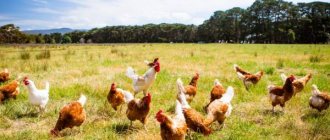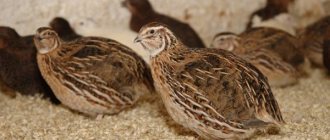The hydroponics business is becoming increasingly popular - growing crops in special liquid substrates containing all the necessary nutrients.
Register for a free marathon
How to create passive income in 4 days
A marathon where you will create passive income live from scratch and learn specific strategies for investing in apartments, houses, garages, cars and even profitable sites
Begin
How much can you earn from hydroponics?
Hydroponic cultivation differs from traditional methods in that it does not require large material and labor costs in the process, but at the same time has high profits . What are the savings due to?
- there is no need to cultivate, fertilize, or water the land;
- there are no costs for pest and weed control, plants get sick less;
- plants grow faster and bear fruit better, because all nutrients are supplied in full to the root system;
- there is no factor of influence of weather conditions;
- small areas are expected to be used;
- no crop rotation required;
- Water consumption for irrigation is several times lower than when growing in open ground.
Installation diagram for hydroponics
Hydroponics has its own specific risks. First, a hydroponic business requires a large initial capital investment. Secondly, there is a high dependence on power supply: when the light is turned off, the supply of the nutrient medium stops. This threatens the death of plants. Thirdly, the technical side is of great importance: it is extremely important to maintain the equipment in working order. To work at such enterprises, highly qualified workers are required. Fourthly, it is necessary to have an uninterrupted supply of water. Hydroponic growing as a business will be successful if you think through all the details of production and solve logistics issues.
How much can you earn? It is difficult to answer this question unambiguously. We can draw conclusions knowing that, at low costs, the yield in hydroponic production is many times higher than when cultivated using traditional methods.
What are microgreens and where did they come to us?
Such greens represent a transitional stage from germinated seeds to traditional plants. These are sprouts of ordinary cultivated plants at an early stage of development - microgreens should be cut after the first 1-2 true leaves appear. The prefix “micro-” is absolutely justified here - ready-to-eat sprouts are from 2 to 7 cm in height. It takes about 5-7 days to obtain a harvest - during this period, as research shows, the seed potential is revealed to its full potential.
Therefore, this product differs from the more familiar sprouted seeds not only in appearance, but also in its chemical composition. At the stage of forcing the first leaves, plants synthesize such valuable substances as:
- cytokines (growth hormones that activate cell division processes);
- auxin (also a hormone that ensures intensive growth).
These components are also present in seedlings, but in much smaller quantities.
The first to master the production of food crops in the microgreen format was in California - here miniature sprouts became the know-how of local restaurant chefs. The unusual format, combined with a bright taste, provided dishes with microgreens with attention and then the love of the public. This began the spread of this unusual format of greenery around the world.
Currently, this category quite often falls into the category of “superfoods,” which has a positive effect on customer interest. At the same time, the procedure for growing microgreens is relatively simple and does not require complex equipment or expensive resources. And this further increases its attractiveness as a business idea.
Where to start a business?
Organizing a business requires planning. The business plan should include the following aspects.
What to grow
The priority is the issue of choosing a crop for cultivation. This:
- ordinary vegetables - most often tomatoes, cucumbers, peppers;
- greens: parsley, dill, cilantro, lettuce, onion;
- berries (usually strawberries), except for large bushes;
- flowers;
- seedling;
- medicinal herbs.
Hydroponic installations are successfully used for germinating grain, solving the issue of providing animals with green food in the winter. Like a business in any industry, hydroponics must take into account the needs of the market in a given region. The future harvest also largely depends on the chosen variety.
The principle of growing strawberries hydroponically in a greenhouse.
Where to sell products
You can sell your products to stores, wholesale centers and markets. But then it will have to be sold at a low price, which is not profitable for the farmer. It's better to open your own point of sale. It’s a good idea to establish connections with a processing plant, restaurants, and cafes. In any case, we need to solve the problem in such a way as to do without intermediaries.
Where and how to grow
Knowing which culture to take as a basis, you need to choose a room. You can use any, but unsuitable ones will require extra costs associated with lighting. The best option is a greenhouse.
With hydroponic production, it will be most cost-effective to grow produce year-round.
Therefore, to maintain the required temperature during the cold season, it is necessary to insulate the building or provide heating inside.
It has been verified that heating costs will be reduced by a third with high-quality thermal insulation.
Manufacturing control
It is necessary to combine theory and practice. Solving problems that arise during the production process, monitoring the operation of all systems, establishing and maintaining connections with business partners are the tasks of the manager. Success in business depends on how competent his actions are.
Financial analysis of production
It is necessary to take into account expected and actual expenses and income, which will help make proper planning for the future.
Why is a microgreens business attractive?
The key advantages of microgreens as a business area include the following nuances:
- for the initial launch, an average of approximately 40 thousand rubles is required;
- the vegetative cycle is no more than 10 days, so working capital pays off relatively quickly;
- there is no need to build a large-scale and expensive greenhouse, so a microgreens farm can be organized right in the city;
- a minimum of resources is required - a substrate (if you grow using the hydroponic method, it is not needed), water, light (it is possible without additional lighting), heat;
- high added value – one of the highest in all food production;
- You can grow greens at any time of the year and in any latitude;
- you can place the beds vertically, greatly increasing the productivity of the occupied space.
Today, some large cities already have their own city farms.
They occupy an average of 100-120 m2, on which multi-tiered shelving systems, lighting and automatic watering systems are located. Experts also recommend installing vacuum coolers to quickly cool microgreens before cutting - for small production volumes, a refrigerator will be enough. To open such a mini-farm you will need approximately 700-800 thousand rubles. The payback period is a maximum of 1-2 years. Small initial investments make this business area accessible to entrepreneurs with limited finances. And the urban format of activity significantly facilitates and reduces the cost of logistics. In the West, grow boxes in which microgreens are grown are often installed directly in stores. As a result, buyers receive the freshest products, which are cut in front of them, and the manufacturer reduces transportation costs to almost zero. Accordingly, the profitability of such activities is growing.
However, experts say that there are practically no industrial producers of microgreens in Russia today. In particular, there is only 1 such company in St. Petersburg, growing no more than 150 kg of produce per month and working only with restaurants. However, they usually buy a maximum of 1.5 kg of miniature greens at a time - so delivery has to be arranged frequently. And this combination of small volumes and regular deliveries makes this niche more suitable, again, for enterprises from the M&S segment rather than for large agricultural complexes.
At the same time, the absence of strong and large players makes this industry even more attractive. A pioneer company that has reached large-scale production and sales volumes will inevitably face all the difficulties of mastering a new direction - however, if they are successfully overcome, it will be able to become practically a monopolist.
Which hydroponic equipment should you choose?
Hydroponic technologies are based on irrigation. They are the ones who determine what equipment will need to be ordered. There are passive systems, where the process occurs independently, and active ones, when the substrate is supplied using a pump.
Aeroponics scheme
- Wick is the simplest passive growing method. The nutrient medium is supplied through the wicks independently. There is no outside intervention, so the system is cheap and simple. Requires substrate container and wicks.
- The most common is drip irrigation. Using a pump, the nutrient liquid is supplied to the roots in drops. This is mainly how vegetables are grown.
- Flow hydroponics is most often used for growing greens. A life-giving solution circulates in the channels where the roots are located.
- Drip-flow or combined. The device is complex, but progressive. Cultivates delicate crops, such as berries. With this system, plants can be arranged in tiers.
- Aeroponics. She has a great future. There is no soil or liquid medium here. Plant roots hang freely in an opaque empty container, into which a liquid substrate is periodically supplied in the form of aerosols or mist. In addition to the pump, you need a sprayer and a timer.
Successful cultivation of plants requires solving three problems: lighting, watering, temperature conditions. The correct selection of lamps, sufficiently powerful and reliable, is necessary. To heat greenhouses, you can purchase a fan heater, a convector, or a stove for heating with wood (you will need a fan to distribute the warm air evenly). If long and frequent power outages are real, then you will have to provide for an autonomous generator.
Want to start growing something more unique? Then read the article about the truffle growing business!
Business plan for growing microgreens
To avoid various mistakes, it would be a good idea for a beginning city farmer to take into account the experience of those entrepreneurs who have already achieved some success here. In particular, you can use recommendations on the optimal sequence of actions.
Market analysis
First of all, you need to assess the potential of the sales market. Demand for microgreens is generated only by cities - and the larger they are, the higher the likelihood that the product will “come in”. Experience shows that such a business can be effectively launched in small towns with a population of 100-150 thousand people. Microgreens can be sold both through specialized eco-stores and through regular supermarkets. HoReCa enterprises may also be interested in your proposal.
Calculate the approximate number of potential sales points and multiply them by the approximate weekly supply (15 packages). For example, if there are 100 cafes and restaurants in a city, then in theory they can be supplied with up to 1,500 packages weekly. Of course, these are very rough estimates, so you should not base your entire development strategy on them.
Look at the competitive environment too. If there are no large businessmen selling microgreens in your city, then this is already a good indicator. If there are small city farmers with modest production volumes, then this is also a favorable sign.
Preparing the room for growing microgreens
The technology for growing microgreens involves creating and maintaining certain conditions. There are no specific requirements here, but those that exist must be observed:
- reliable insulation and heating – cold is contraindicated for seedlings;
- lighting, without which growth processes are impossible;
- watering system – germinated plants require constant humidity;
- sewerage - water needs to be changed regularly;
- ventilation – will help maintain the required temperature, prevent air stagnation and prevent the formation of mold;
- equipment for cooling sprouts - it is better to cut microgreens after cooling to +4 degrees, in this case they are stored much better.
When choosing a lighting system, keep in mind that different plants need light at different temperatures during different periods of growth. At the initial stage, a cold spectrum is recommended, and for the first leaves to be fully pasted, a warm glow is needed. Therefore, you will have to either replace the lamps or use other lamps. The first method is cheaper, but more complicated. The second, accordingly, is more convenient, but more expensive. What to choose - decide according to your budget.
Assembling the racks
To get high productivity from a small area, trays with microgreens should be placed vertically in several levels. For this you will need suitable shelving. To collect them, you can use metal profiles - they are reliable, easy to use, and inexpensive. Please note that for different growing methods, the design of the racks must be individual. The best option at the initial stage is to make 1-2 racks for different growing methods:
- under trays with soil, coconut fiber or peat;
- for hydroponic systems with different methods of humidification.
Then, having assessed the productivity and convenience of each method, you can choose a specialization for yourself and build the necessary shelving for it.
Select and purchase equipment and seeds
Stock up on the following equipment:
- container for soaking seeds;
- growing trays;
- containers for packaging finished goods;
- packaging film/paper;
- watering cans of different sizes;
- buckets;
- garden shears for neatly cutting off sprouts.
As for seeds, the choice is very wide. In microgreen format, you can grow almost any crop from herbs to legumes and grains. The only limitation is that nightshades (tomatoes, eggplants, bell peppers, etc.) cannot be grown this way - they contain alkaloids from the very early stages of growth that are completely unbeneficial to humans.
At the initial stage, in order to get started faster, it is better to order seeds from Europe. Here, the culture of growing microgreens is already more mature and established, therefore the local seed material is more adapted to this method of use. As for domestic seeds, they are certainly more accessible, but their germination often leaves much to be desired. Therefore, it is better to start a business with European seed material, and then gradually, in small volumes, test Russian analogues, finding options with good germination rates and quality of the resulting sprouts.
Planting seeds
Here you need to take into account a number of rules and recommendations:
- Before planting, the seeds need to be soaked in water to initiate growth processes in them;
- the prepared seed can be laid out on baking sheets, in trays or containers - no substrate is needed now;
- To germinate, seeds require high humidity, darkness and stable temperature;
- different types of plants germinate over different periods and require individual temperatures and humidity;
- hatched seeds are planted in a substrate or hydroponic system;
- They should be exposed to light only after 2-3 days;
- It takes another 5-7 days to force the stem with the first leaves, after which the microgreen can be sent for sale.
It is very important to ensure regular changes of water in the trays and effective ventilation. If the humidity stagnates, rot and mold will appear on your farm. Affected seeds and seedlings will have to be thrown away - and this will result in material damage.
You also need to immediately systematize the disembarkation process and organize its clear planning. Make a table with the numbering of racks/trays and a calendar plan - and draw up a scheme for growing certain crops. This will help prevent empty shelves from sitting idle and at the same time blocking work when a large number of micro-harvests are ripening at the same time.
How much money do you need to start a business?
In order to organize your own hydroponics business, you need a decent investment. Even if you decide to create a small farm with a retail outlet attached to it, you will need from 10-25 thousand dollars.
The main expenses of a hydroponic business are:
- construction of a greenhouse or rental of appropriate premises;
- hydroponic installation;
- seeds and substrate;
- shields, containers;
- lighting;
- systems for water purification and space heating;
- backup electric heaters;
- refrigeration units;
- fuel storage tanks;
- electric generators.
In addition to the listed costs, you need to pay for business registration, conduct an advertising campaign, and also resolve all administrative issues, which also require certain financial costs.
Seedlings according to Kurdyumov
In growing seedlings, Nikolai Kurdyumov remains true to his principle of cooperation with nature, and he considers good seedlings to be those that grew with minimal human intervention: without transplants, with sufficient warmth, moisture and nutrition, in a sunny place.
Here are some rules:
- healthy seedlings grow outward rather than upward, which means they need space. No crowding on the windowsill, and this will bring the harvest closer by about a month. According to Kurdyumov, we should strive for seedling bushes whose stems are almost as thick as a pencil.
- Tomato seeds for seedlings should be sown according to a 4x4 cm pattern. It is believed that for seedlings before picking, the composition of the soil is not particularly important - Kurdyumov insists that the soil must be fertile.
- Exactly after 20 days, the seedlings, along with cubes of soil, are removed and placed under film in fertile soil, according to a 12x12 cm pattern. Transshipment should be carried out so that the plants do not even notice it.
- After another 15-20 days, the seedlings, along with soil cubes, are removed and transplanted to a permanent place without the slightest damage to the root system. For those who do not often come to their dacha, Kurdyumov recommends covering the beds with lutrasteel: nothing will ever burn under it.
The agronomist is a supporter of early planting of seedlings: he believes that in Central Russia, seedlings at the age of three weeks can be safely planted under film almost every year at the end of March. If the greenhouse is made well, nothing bad will happen to the seedlings.
Kurdyumov recommends growing cucumber seedlings using approximately the same scheme, the only thing is that cucumber seedlings need a higher temperature; below -15 degrees they begin to hurt. And cucumbers simply cannot tolerate even the slightest damage to the root system.
Based on this, the agronomist recommends:
- sow cucumber seeds not in boxes, but in peat tablets or pots, in paper bags, bags, and so on;
- plant immediately in a permanent place, in a garden bed, and cover with lutrastil or film.
Kurdyumov advises to sow cold-resistant cabbage directly into the garden bed, preferably under lutrastil. He considers our usual planting of cabbage in the heat to be a monstrous mistake, which leads to an inevitable reduction in the harvest. Why lutrastil: cabbage does not like heat and even heat, it stretches out at temperatures above +18 degrees, so film is not suitable here, and the cost of lutrastil will be more than recouped.
What documents are needed
The list of necessary documentation that each organizer of this business must prepare includes standard papers for an individual entrepreneur or LLC, as well as permits from the SES, fire inspectorate and (in some cases) local authorities. In addition, you need to conclude agreements with all contractors, obtain laboratory test results confirming the quality of the grown products, and sign employment contracts with staff. The last document must contain a clause on non-disclosure of information related to hydroponics.
Step-by-step production plan
The production plan combines the selection of territory, equipment for greenhouses, selection and purchase of planting material, personnel search, as well as solving other organizational issues.
Let's take a closer look at each of the points.
Step 1. Selecting equipment and greenhouses
To open a business you will need 3-5 greenhouses made of glass, polycarbonate or acrylic. The cheapest option is plastic film, but it is short-lived and breaks from wind and weather conditions.
In addition to the frame you need:
- soil cultivation equipment;
- soil feeding;
- equipment for heating and lighting of the greenhouse;
- rack structures;
- equipment for installing an irrigation system;
- thermometers, humidity sensors.
The purchase and installation of equipment is an important stage on which productivity and the convenience of staff work depend.
Step 2. Installation of the greenhouse
Installation begins with the foundation and installation of supporting parts of the structure. The presence of a foundation is not necessary, but with it your crop will be reliably protected from rodents and pests. In cold regions, the foundation will prevent heat loss.
Metal welded structures are used as a base (frame), onto which polycarbonate sheets are attached.
Choose a site for greenhouse farming close to communications. Otherwise, you will incur additional costs for every meter of water supply and sewerage connected to it.
The next stage is the installation of an irrigation system, a hydroponics system (growing greens without soil), heating and lighting. When they are installed, the soil is prepared. It needs to be loosened, fertilized, and moistened.
The business plan should contain information about the material and model of the greenhouse, as well as information about who will install it.
Step 3. Purchasing seeds
Greens are grown from seeds, bulbs and seedlings. Buy planting material only from trusted sellers. Over time, you will collect seeds yourself, but for the first time, visit specialized stores or greenhouse complexes.
Step 4. Recruitment
For 5 greenhouses you will need 15-18 employees.
Personnel costs depend on the number of personnel and production volumes. If the volumes are modest, many novice entrepreneurs save on hiring a sales manager and accountant.
The list of employees and their approximate salary is given in the table:
| Job title | Responsibilities | Approximate salary, rub |
| Manager or engineer | Monitoring the work of employees, the operation of heating and lighting systems, purchasing seeds | 40 000-45 000 |
| Handyman | Watering, loosening the soil, harvesting, packing greens | 18 000 -25 000 |
| Driver | Delivery of products to the point of sale | 20 000 — 25 000 |
| Sales manager | Finding clients, resolving product sales issues | 30 000 -35 000 |
| Accountant | Accounting, accrual of salaries to employees | 25 000 -30 000 |
| Security guard | Ensuring the safety of greenhouses | 15 000 -20 000 |
Entrust your accounting to an outsourcing specialist. By concluding a cooperation agreement with him, you will not have to hire a full-time employee.
Choosing what to grow in a greenhouse
If you decide to open a greenhouse business from scratch, it is important to understand what greenhouse products you will grow. When choosing a culture, you need to focus on factors such as:
- climate in your region (it is better that the temperature level in the greenhouse does not differ greatly from the natural one for at least 50% of the production cycle. Otherwise, you risk significantly increasing your utility costs for the greenhouse)
- supply and demand for a given crop (what kind of crop is in demand in the area where you are starting a business? What products are the market oversaturated with?)
- Will there be favorable sales conditions for you?
Depending on the analysis of these factors, we will decide on the main niche. The most popular types of crops are: vegetables, flowers, herbs, berries, mushrooms . Farmers also grow seedlings for sale. Let's take a closer look at the economic benefits of each product.











